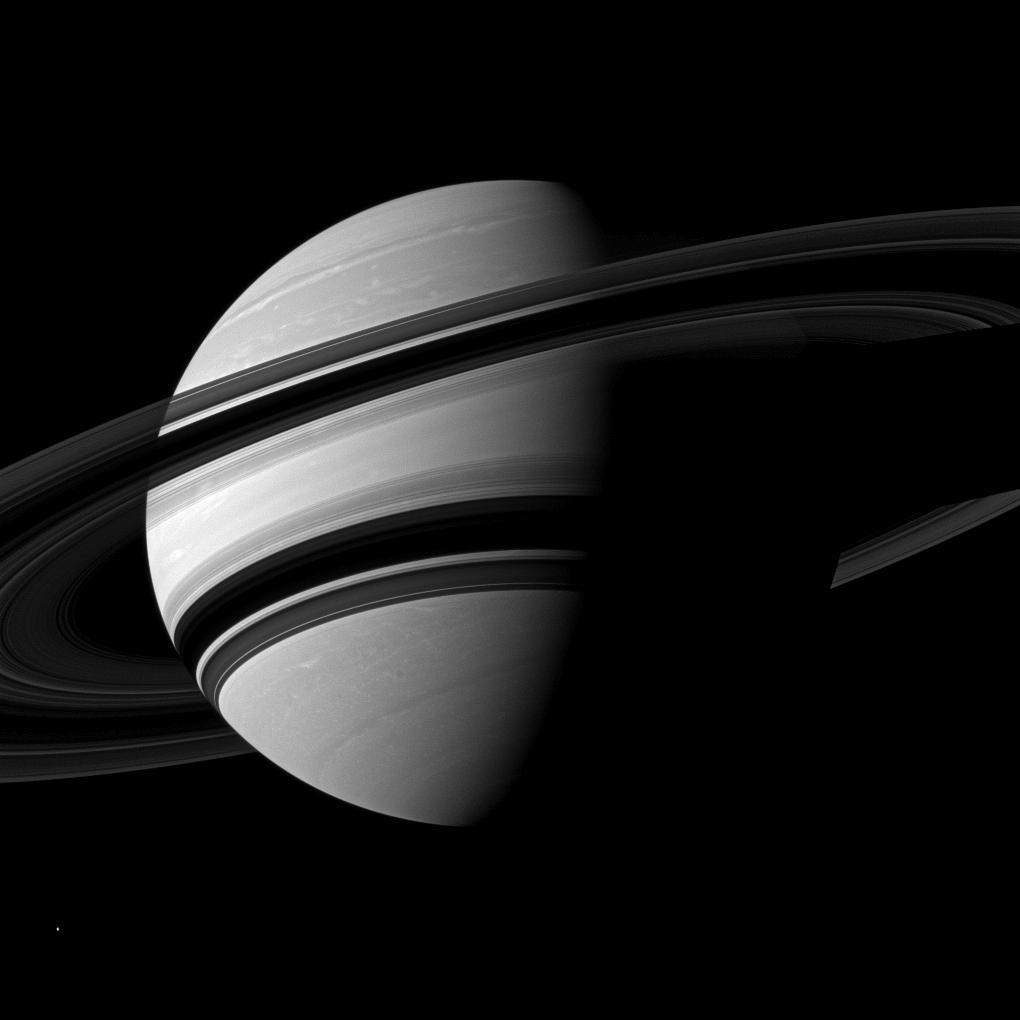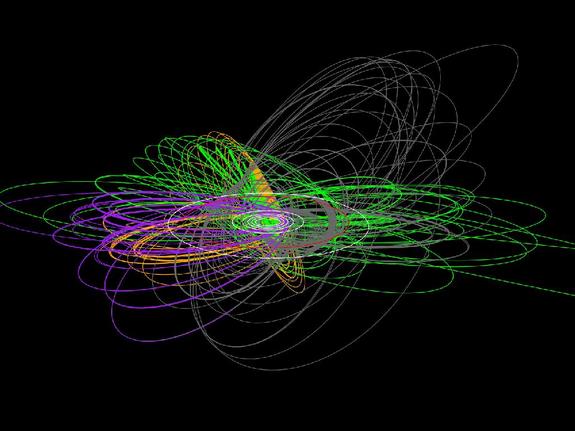NASA's Cassini Probe at Saturn Celebrates 15 Years in Space

NASA’s Cassini spacecraft marked 15 years in space Monday (Oct. 15), and the well-traveled probe won’t stop studying Saturn and its many moons anytime soon.
Cassini has logged more than 3.8 billion miles (6.1 billion kilometers) since its launch on Oct. 15, 1997, researchers said. The spacecraft has made many contributions since arriving at Saturn in July 2004, including discovering water-ice geysers on the moon Encelaudus and snapping the first views of the hydrocarbon lakes on Saturn’s largest moon Titan.
During its time in space, the Cassini probe has sent home about 444 gigabytes of scientific data, including more than 300,000 images. Researchers have published more than 2,500 papers based on Cassini data so far, NASA officials said.
"As Cassini conducts the most in-depth survey of a giant planet to date, the spacecraft has been flying the most complex gravity-assisted trajectory ever attempted," Robert Mitchell, Cassini program manager at NASA's Jet Propulsion Laboratory (JPL) in Pasadena, Calif., said in a statement. [Gallery: Latest Photos from Cassini]
"Each flyby of Titan, for example, is like threading the eye of the needle," Mitchell added. “And we've done it 87 times so far, with accuracies generally within about one mile, and all controlled from Earth about one billion miles away."
Cassini’s operators have sent it to visit more than a dozen of Saturn’s 60-plus moons in the last eight years, and they sometimes ask the probe to get shots of the planet’s poles (and the poles of some of its moons).
Planning out such an ambitious flight path is complicated, especially given the gravitational influences of Saturn’s moons and Cassini’s limited fuel supply, mission managers said.
Sign up for the Live Science daily newsletter now
Get the world’s most fascinating discoveries delivered straight to your inbox.
"I'm proud to say Cassini has accomplished all of this every year on-budget, with relatively few health issues," Mitchell said. "Cassini is entering middle age, with the associated signs of the passage of years, but it's doing remarkably well and doesn't require any major surgery."
Cassini won’t take it easy as it enters its golden years. Spring has just come to the northern hemisphere of Saturn and its moons, and mission managers want the spacecraft to study the changes wrought by this seasonal shift.
And then Cassini will end its life with a bang.
In November 2016, the probe will embark on a series of orbits that take it ever closer to Saturn. These orbits will start just outside Saturn's F ring, the outermost of the main rings, researchers said.

In April 2017, a close encounter with Titan will sling Cassini on a path that will take it inside Saturn’s innermost ring, just a hair away from the top of the giant planet’s atmosphere. Cassini will make 22 such close passes, and then a gravitational tug from a final, distant flyby of Titan will seal the spacecraft’s fate. It will crash into Saturn on Sept. 15, 2017.
On its death dive — performed to protect potentially life-harboring worlds such as Titan and Enceladus from contamination — Cassini will be crushed and vaporized by the pressures and temperatures of the ringed planet, researchers said.
"Cassini has many more miles to go before it sleeps, and many more questions that we scientists want answered," said Linda Spilker, Cassini project scientist at JPL. "In fact, its last orbits may be the most thrilling of all, because we'll be able to find out what it's like close in to the planet, with data that cannot be gathered any other way."
The $3.2 billion Cassini-Huygens mission is a collaboration involving NASA, the European Space Agency and the Italian Space Agency. The Cassini spacecraft ferried a probe called Huygens, which landed on Titan in January 2005. Huygens survived its plunge through the huge moon’s thick atmosphere and sent data back to Earth for about 90 minutes after touching down.
This story was provided by SPACE.com, a sister site to LiveScience. Follow SPACE.com on Twitter @Spacedotcom. We're also on Facebook & Google+.











